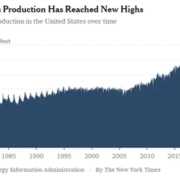⚠️ IMPORTANT LEGAL DISCLAIMER:
The information provided on this page is for general informational purposes only and does not constitute legal, financial, or investment advice. Oil and gas laws, mineral rights regulations, and royalty structures vary significantly by state and jurisdiction. While we strive to provide accurate and up-to-date information, no guarantee is made to that effect, and laws may have changed since publication.
You should consult with a licensed attorney specializing in oil and gas law in your jurisdiction, a qualified financial advisor, or other appropriate professionals before making any decisions based on this material. Neither the author nor the publisher assumes any liability for actions taken in reliance upon the information contained herein.
In the oil and gas industry, pooling agreements are a crucial component of exploration and production operations. These agreements allow for the efficient extraction of oil and gas from multiple parcels of land by combining them into a single drilling unit, which optimizes the use of resources, reduces costs, and enhances production efficiency. For landowners who hold mineral rights or lease their land for oil and gas extraction, understanding pooling agreements is essential to ensuring fair compensation and protecting their interests.
While pooling agreements are common in the industry, they can be complex and may have significant financial, legal, and operational implications for landowners. It’s important for landowners to understand the mechanics of pooling, the types of pooling agreements, and their rights under these arrangements. In this article, we will explore what pooling agreements are, how they work, and what landowners need to know to navigate these arrangements effectively.
What Are Pooling Agreements?
A pooling agreement is a legal arrangement in which multiple landowners combine their mineral rights into a single unit for the purpose of drilling and extracting oil and gas.
These agreements typically allow the operator to access resources more efficiently and cost-effectively when the oil or gas reservoir extends across the boundaries of several properties. Pooling is often necessary to avoid the inefficiency and high costs of drilling multiple wells on adjacent properties when one well could access resources across a larger area.
In a pooling agreement, landowners agree to combine their respective mineral interests into a larger unit, usually defined by the oil or gas company. The landowners receive royalty payments based on their share of the pooled unit, with the revenue distributed according to the percentage of mineral rights they contribute to the pool. Pooling allows for the extraction of resources from a larger area, often making it more economically viable for the operator to develop the resource.
Pooling agreements can take different forms depending on the jurisdiction and specific contractual terms. They are common in areas where oil and gas reservoirs do not align perfectly with property boundaries, making it difficult to extract resources from a single parcel of land.
Types of Pooling Agreements
Pooling agreements can take several forms, depending on the specific needs of the landowners and the oil and gas operator. The two primary types of pooling agreements are voluntary and compulsory.
Voluntary Pooling Agreements
In a voluntary pooling agreement, landowners voluntarily agree to combine their mineral rights for the purpose of drilling and production. The landowners must give their consent to pool their mineral rights, and the operator typically negotiates with each landowner individually. These agreements are more flexible and often involve negotiations over terms such as royalty rates, lease terms, and the size of the pooling unit.
In voluntary pooling, landowners may choose not to participate in the pool if they are not satisfied with the terms or compensation the operator offers. However, if they decline to participate, they may forfeit any opportunity to share in the revenue generated from drilling the pooled unit. If the operator drills on an adjacent property that accesses the landowner’s mineral rights, the landowner who does not pool may still be entitled to receive compensation.
Compulsory Pooling Agreements
Compulsory pooling, also known as forced pooling, occurs when an oil and gas operator seeks to pool mineral interests in a unit even if some landowners do not voluntarily agree to participate.
Operators typically do this to ensure that they can extract resources efficiently from a reservoir that spans multiple properties, particularly when they have secured leases with other landowners, but a few landowners refuse to sign the pooling agreement.
In areas with compulsory pooling laws, an operator may apply to a regulatory authority (such as a state’s oil and gas commission) to force the pooling of non-consenting landowners’ mineral interests. While compulsory pooling forces the landowner to participate in the pooling arrangement, they are still entitled to receive royalties based on their share of the unit.
Compulsory pooling laws vary by jurisdiction, and the specific conditions under which an operator can force pooling depend on state or provincial regulations. In many cases, a pooled unit must provide a certain minimum royalty or payment to the non-consenting landowner as compensation for their participation, even if they did not agree to it voluntarily.
Key Components of Pooling Agreements
Understanding the key components of a pooling agreement is essential for landowners to protect their rights and ensure they are receiving fair compensation. Several elements are typically included in a pooling agreement:
Pooling Unit Size
The operator determines the pooling unit, referring to the land area from which they will extract the oil or gas. The operator typically considers the size of the reservoir or the best configuration for drilling and production. The pooling unit can include multiple parcels of land owned by different landowners or just a single parcel, depending on the extent of the reservoir.
The size of the pooling unit can affect how much royalties landowners receive, as all participants in the unit share the production. Landowners should be aware of the pooling unit size to ensure they receive fair compensation for the resources that companies extract from their property.
Royalty Payments
Royalty payments are one of the most critical aspects of a pooling agreement. In a pooled unit, landowners receive royalty payments based on the percentage of mineral rights they own relative to the size of the unit. For example, if a landowner contributes 10% of the pooled unit, they would receive 10% of the royalties generated from the unit.
It is important for landowners to carefully review the royalty terms in the pooling agreement to ensure they are receiving a fair share. In some cases, operators may offer a lower royalty rate than what landowners would receive if they leased their land individually. Landowners should also be aware of any deductions or costs that companies may take out of their royalty payments, such as transportation or marketing fees, which could reduce the amount they receive.
Duration of the Pooling Agreement
Pooling agreements generally specify the duration for which the landowners agree to pool their mineral rights. The duration can vary, but it is typically tied to the length of time that production continues in the unit. If production ceases or declines significantly, the pooling agreement may terminate. Landowners should be aware of how long they are committing their land to the pooling arrangement and whether there are any provisions for terminating or renegotiating the agreement.
Operator’s Rights and Responsibilities
The pooling agreement should outline the rights and responsibilities of the operator, including their ability to drill and extract oil and gas from the pooled unit. It will also specify the operator’s obligations in terms of maintaining the well, paying royalties, and reporting production levels to the landowners.
The operator will generally have the right to drill and extract resources from the pooled unit, but they are expected to operate within the bounds of the agreement and comply with relevant regulations.
Landowners should ensure that the operator fulfills certain responsibilities, such as providing regular updates on production levels, addressing environmental concerns, and maintaining the well in accordance with industry standards.
Dispute Resolution
Disputes can arise during the life of a pooling agreement, especially when it comes to royalty payments, well maintenance, or operator conduct. Landowners should understand the dispute resolution provisions in the pooling agreement, which specify how conflicts will be handled. This may include mediation or arbitration procedures and clearly outline the steps they can take if they feel someone is violating their rights.
The Importance of Reviewing Pooling Agreements
Before entering into a pooling agreement, landowners must carefully review the terms and conditions to ensure they fully understand their rights and responsibilities. In many cases, the terms of a pooling agreement are negotiable, and landowners may have the opportunity to secure better compensation or more favorable terms by negotiating with the operator.
Landowners should also seek legal advice before signing any pooling agreement. Landowners can seek help from a qualified attorney to understand the legal implications of the agreement, identify potential issues, and ensure that their interests are protected. Legal counsel can also help landowners navigate complex issues related to compulsory pooling, royalty payments, and other aspects of oil and gas leasing.
The Impact of Pooling Agreements on Landowners
Pooling agreements can offer significant financial benefits to landowners, particularly when oil or gas reserves are abundant in a pooled unit. By pooling their mineral rights, landowners can benefit from shared production costs and royalties from a larger, more efficient drilling unit. However, the pooling of resources can also reduce the individual control that landowners have over their mineral rights, and they may receive less compensation than they would have received through independent leasing.
Landowners should carefully weigh the pros and cons of pooling agreements to determine if it is the right option for them. It’s essential to understand the potential financial outcomes, the rights of the operator, and the long-term implications of the agreement.
Pooling agreements are an essential part of the oil and gas industry, providing landowners with an opportunity to share in the production of oil and gas from multiple properties. While these agreements can offer financial rewards, they also come with legal complexities and potential risks. Landowners need to understand how pooling works, the terms of the agreement, and their rights within the arrangement. By reviewing the pooling agreement carefully, negotiating favorable terms, and seeking legal advice, landowners can protect their interests and ensure that they receive fair compensation for the use of their mineral rights.
Do you have any questions related to pooling agreements? Feel free to contact us here.











